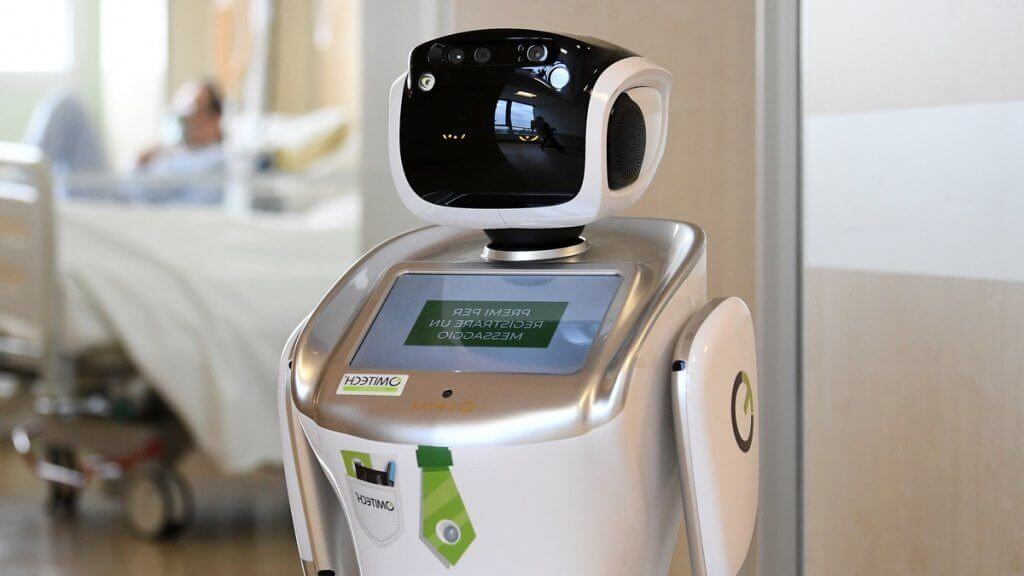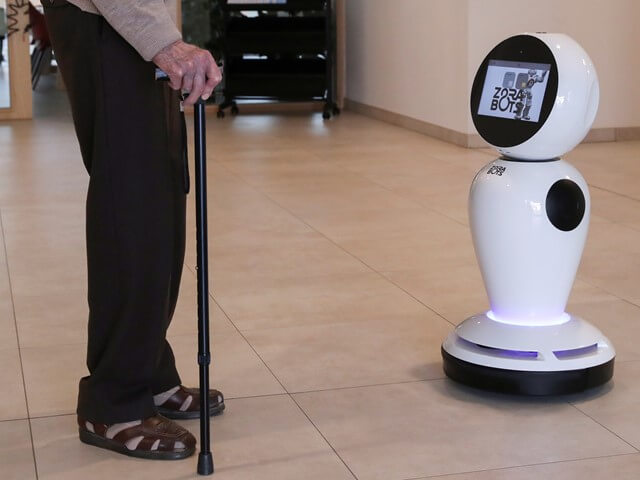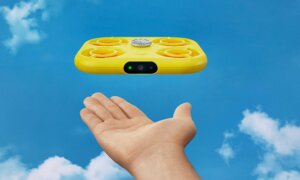Right now, the risk of an infection or the transmission of the no-no virus is extremely high, and most of our facilities are out of order or not working at full capacity. Sure, Amazon is going to keep providing services – until when, well that’s anyone’s guess – but other businesses are looking ahead at the advancements that technology has made in the field of robotics.

We may not have a Cmd. Data right now, but little mechanical bots and drones are quite capable of doing simple tasks and help workers steer free of danger. Like Tommy The Robot Nurse, that is used in Italy and which is an amazing little white droid that roams around the hospital, does check-ups and gives patients their medicine.

Tommy is only one of six in existence, and he allows the doctors in the hospital to use less protective gear and lets patients interact directly with the staff without any risks thanks to its integrated touchscreen.

Thailand is using “Ninja Robots” in hospitals and clinics to combat the outbreak. The Ninja Robot was initially made to monitor patients that had strokes, but now, with a few modifications, they can take your temperature and talk directly to your medic.

China is using AI Robots to disinfect and spread awareness. Atris is a UBTECH Outdoor patrol bot that can be controlled from a distance and has a spectrum camera that can check your temperature and allow the official to talk directly to you if anything goes wrong.

In Belgium, James is another robot that helps the elderly to communicate in the time of quarantine. It is a fighter of loneliness as it states, and can use a Facebook account to talk to your loved ones and communicate with other support groups. The most impressive fact about James is that there are more than 60 of these little Lovenators roaming around Belgium and providing assistance.
Now, across the pond, in Romania to be more exact, a small team of engineers is crowdfunding ten UV-C robots to fight the virus.
The name of the project is MUV, and it wants to create 10 robots that will sterilize and clean the working areas without the risk of exposure. They plan to do that using the UV spectrum, more specifically the UV-C filter that kills more than 99% of viruses.
MUV can cover an area of 215 square feet, it operates by neutralizing bacteria and viruses through the use of high flow fluorescent UV-C light in less than 15 minutes. On top of that, it has a navigation system capable of avoiding fixed and mobile obstacles.
The UV-C is an effective weapon against the virus, according to IUVA (The International Ultra Violet Association), the spectrum is highly effective against the coronavirus. And in parts of the world, like the UK, UV-C robots have been used to “bake” the virus out of existence.
The use of this robot comes with some warning signs and you need protection, but, once implemented, it can save time in sterilization and cleaning. On top of that, is not human-operated… at least the big MUV. The small one, the MUV-Lite it’s a bit less expensive, but, it has no automation included.
If you want to help the project, the fundraiser is going on right now and you can “toss a coin” over on Facebook HERE!
The sky is the limit here, seeing that some of the robots are put together and in working order in a few days. Sure, some of them are not autonomous, being little more than glorified drones, but the automated home delivery drones from China or the smart delivery system that Amazon is putting into place is the direction we want to see the world going.
But let’s be real, companies like Wing are the future. They deliver right now, on a small scale and only an assortment of goods, but in the US, this is a big step. Zipline is another company that hopes to fight the Coronavirus with drones. Not to UAV (unmanned aerial vehicle) the virus out of existence, but to deliver tests and vaccines in the U.S. And they are working right now on it, even delivering medical supplies and vital blood in parts of Africa. And let’s remember the Amazon blimp that delivered drones, the Amazon Scout and other products.
The reality is that robots are a bit limited right now, and they require a lot of human interaction to get you to use them as intended. If they deliver food they will not ask for a tip, but they will not open until you swipe your card or you open a hatch. The A.I. is limited, and it has a long way to go until we get a smiling robot on our doorstep that asks us if we want to participate in a survey for a quick discount.
Decked with high discharge of UV-C provided by fluorescent tubes, the robot can destroy any bacteria, virus, or pathogen through direct ultraviolet radiation on the DNA and micro-organisms RNA.
Innovate, adapt or disappear is something that the business world is well accustomed to, but in this case, seems to be the norm. Drones are cheap to produce right now, complex robots not so much. We will see a time when robots will take care of us, but not any time soon.
Right now, Amazon, Wing, Zipline, and others are at the forefront of this technology, and the moves they make now will influence the perception of the public and how we will see drones and robots in the future. Just don’t ask them about Sarah Connor or any new Terminator movies…
Follow TechTheLead on Google News to get the news first.























